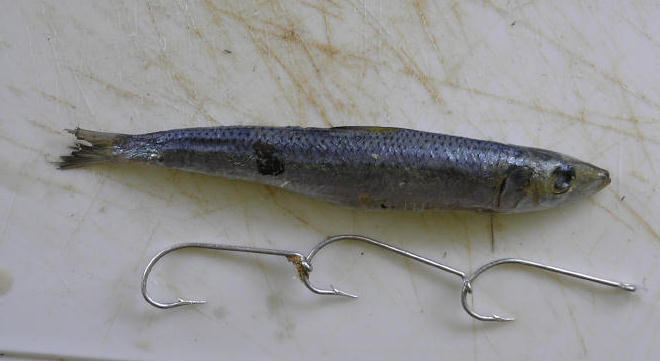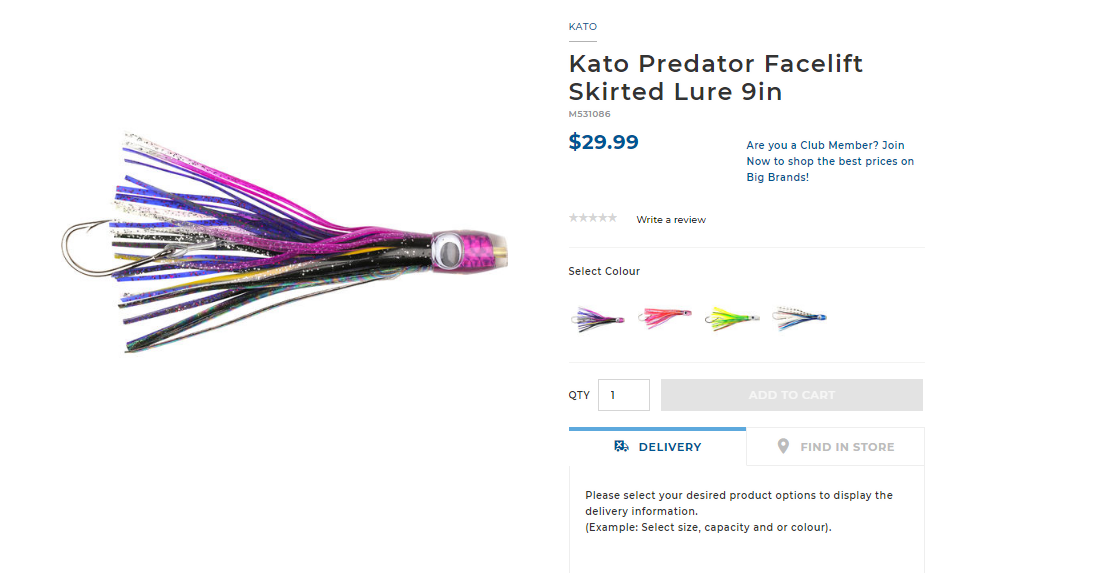The humble pilchard is widely regarded as one of the most versatile fishing baits going around. They have played old faithful to beach fishermen for decades, but you can do a lot more with a pilly than stick a couple of ganged hooks through him or chop him up for burley!
Pimp Up Your Skirt
When it comes to trolling deadbait, more often than not, it’s Gar that you’ll find on the ends of fishermen’s lines, but that’s not to say a pilchard can’t be just as successful. Next time you’re on the troll, try rigging a pilchard with a skirt on the front for a nice attractive flair. The hardest part about rigging deadbait to troll, is to make sure they look natural. If setup incorrectly, they can spin, or move uncharacteristically, which could just be enough for a hungry pelagic to have second thoughts. It’s all about trial and error. One tip is to adjust the amount of line you have out, and how heavy your bait is weighted. Another little tip, try adding a treble hook in your ganged line, or even as an assist hook, to up your hookup rate.
Many Ways to Gang
We couldn’t write an article about pilchards and not mention ganged hooks. In theory, it’s simple, just run three hooks through the bait, toss it out, wait for a bite. But there’s more to it than you may know.

Predatory fish tend to have certain bite targets where they are more likely to attack a baitfish. They will often go for the tail, upper belly or the head. This means, if you want to maximise your chance of a hookup, this is where our gang hooks should be placed.

It always helps to line your set of hooks up alongside your pilchard before inserting them. The hook on the end of the set of gangs should go in first, as it sets the placement for the remaining two. Insert this first hook into the flesh of the pilchard, just before its tail fin, making sure there is enough of the fish to push the hook through without tearing the flesh. The middle hook should protrude through the belly, and the final should go through the pilchard’s eye.
You can also rig your gangs from the top, i.e. putting them into the fish’s back, rather than side. This is more suited to a cast and slow retrieve style of fishing, rather than the set and forget. Rigging a pilchard from the top will make them look as if they are swimming more naturally than side rigging. The same rules apply when top-rigging; line the hooks up alongside the pilchard first, before inserting them, making sure to set the distance correctly with the first hook.
Drop It Low
The Paternoster is undoubtedly the most popular rig when it comes to “bottom bouncing”. In its simplest form, it’s just a sinker at the bottom, with one or two hooks above it, both baited. You can fish them light or heavy, depending on where you are, and what you’re targeting. If you’ve ever stepped foot on a deep sea charter, you will know how much the operators love their squid as bait, but there is nothing wrong with sticking the old pilly onto a hook and sending him down.
The deeper you go, the more attractant you need to snag the bigger fish, so the oily texture and smell of a pilchard can often get the one up over the favoured-squid. Pilchards can often be a cheaper option over squid.
Again, bait placement is key. When using big single hooks on a pilchard, try and thread the tail of the hook, through the pilchard’s body, leaving the barb protruding at the head of the fish. To keep the bait straight, you can even try tying a little half hitch around the pilchard’s tail. Bigger bait can be run with two hooks in them, but you run the risk of losing your prized-pilchard.
Written by Nick Biggs











